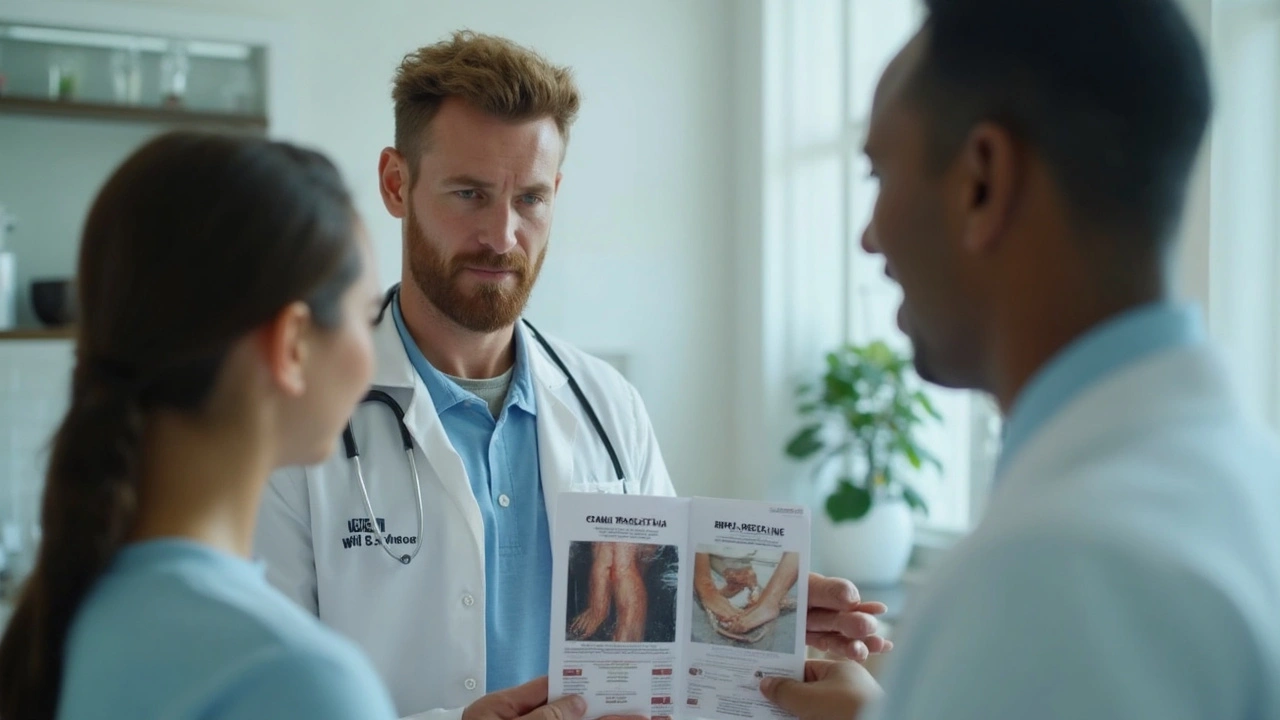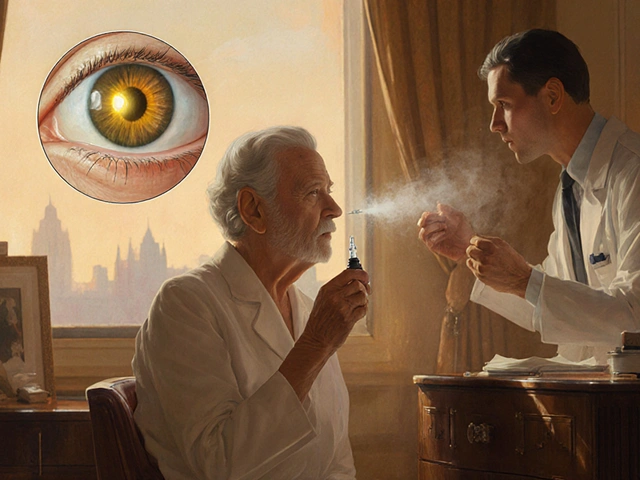Ask any high-performing athlete about their schedule, and you’ll get an answer that’s every bit as demanding as their sport. When hair loss enters the scene—yep, even elite runners, lifters, and cyclists go through it—the idea of getting caught up in slow, risky, or disqualifying treatments is a dealbreaker. This is where people start weighing up PRP (Platelet-Rich Plasma) against microneedling, both hyped for promoting regrowth, but only one might be the better play for someone who trains hard. No one talks much about the killer combo of doctor visits, time spent out of the gym, and the anxiety of anti-doping tests—not until they have to. So, let’s call the plays straight and see which option actually fits an athletic lifestyle.
Understanding PRP and Microneedling: What’s Happening Under the Surface?
If you imagine hair regrowth as a team sport, PRP and microneedling are like two different coaches using their own tactics. PRP, short for Platelet-Rich Plasma, starts out by drawing your blood, spinning it in a centrifuge to separate platelets, then re-injecting plasma full of those platelets (and the stuff they release) straight into the scalp. The idea: your own growth factors turbocharge your follicles and kick new hair into gear. It’s almost like bringing in your body’s own medics to the rescue.
Microneedling’s less about reinforcements and more about shock tactics. A device covered in fine needles is rolled or stamped against your scalp to create microscopic injuries. This sounds rough, but the point is to spark natural healing responses—flooding the area with collagen, blood, and growth signals that help with hair density. Think of it as controlled chaos that gets your roots out of their slump.
Each method depends largely on the body’s natural ability to heal and regrow, but they’re not interchangeable. PRP sessions are usually held at medical clinics or by dermatologists, because you’re dealing with needles, blood, and the risk of infection if not done right. Microneedling can be professional or DIY, though the effectiveness of home rollers doesn’t match up to clinical devices that pierce deeper. That said, DIY options have become a thing just for convenience alone—though athletes should be cautious, since non-sterile equipment is a recipe for scalp trouble.
Athletes often get a lot of pitches about newer or more natural methods. Most endorsements are about chasing less downtime and more control. Before choosing, think about what goes on under the hood: PRP calls in biological firepower and needs medical oversight. Microneedling trades in stimulation by surface trauma, with less medical fuss. Which approach aligns with someone who has double days on the field and random anti-doping testing? That’s the key question the rest of this breakdown will tackle.
Recovery Times: How Fast Can You Get Back in the Game?
For anyone training seriously, missing a crucial session—or having to avoid helmet use after a procedure—is the kind of problem that makes athletes avoid hair regrowth treatments altogether. PRP asks for a bigger time investment right from the start: each session lasts around an hour (drawing blood, spinning, injecting), and people usually go in for a series of three or four spaced a month apart, sometimes followed by maintenance every few months. After the session, you might see some swelling, redness, bruising, or scalp soreness for two or three days. Some patients report a weird, tingly sensation. Typically, you’re told to keep heavy sweating to a minimum for 24-48 hours and not to wash your hair for at least that long. Hitting the gym right after? Not recommended. You want to avoid infection and let your scalp settle.
Microneedling comes with its own set of quirks. Professional sessions last about 30-45 minutes, and recovery depends on how deep the needles go. With clinical microneedling, expect some pinpoint bleeding, redness, and light swelling—imagine a sunburn that can last up to 48 hours. Lighter, at-home rollers usually mean less downtime (just a night off), but results take longer and aren’t as dramatic. With both, sweat, helmet straps, swim caps, or anything that could infect the micro-channels should be shelved for a day or two. That said, by day three, most athletes are ready to go with just a bit of lingering redness.
Here’s where things get more tactical. If competitions, games, or contact training are coming up, PRP’s slightly longer discomfort and infection risk mean you need to plan well in advance. On the other hand, microneedling’s lighter touch, especially when done with clinical precision, can fit around most off-season training windows or even tighter schedules if you don’t mind a little redness. Both treatments require a pause on harsh hair products and sun exposure for about a week, but athletes often report being back to practice way quicker with microneedling than with PRP.
One underestimated tip: ask your doctor or clinic if they routinely work with athletes. Some places provide rapid-recovery protocols (think cooling packs, hydrating serums, and scheduling hacks) aiming to shorten downtime. Also, for those who do helmeted sports—cycling, football, motocross—double-check about head protection as putting a helmet on too soon after either treatment can mess with healing. Both treatments are best played during the off-season if you want zero distractions, especially if your schedule is packed.

USADA Compliance: What’s Clean and What’s Risky?
No one wants to trade in receding hair for a run-in with the United States Anti-Doping Agency (USADA). PRP sounds pretty safe on the surface since it’s all about reinjecting your own plasma, right? Well, the reality is that USADA is picky about substances, and things can get murky when you’re talking about concentrated growth factors. According to USADA’s own guidance as of Spring 2024, autologous PRP—injection made from your own blood—doesn’t trigger a doping violation, provided there’s no added banned substance in the mix. Problems start if someone tries to juice up the PRP with synthetic growth hormones or other additives, a thing that some clinics abroad have done in the past.
Some athletes worry about PRP because of rumors linking it to performance enhancement claims. But under WADA and USADA rules, as long as the PRP remains plain and autologous, you’re on steady ground. Still, any injectable gets extra scrutiny. Always request and keep paperwork for the entire process in case you need to show it during an appeal down the road. Some pro teams actually make PRP treatments part of a medical log to stay ahead of questions from the anti-doping folks.
Microneedling is in a safer, simpler zone regarding USADA. Since it doesn’t involve any injected substance (unless someone adds topical drugs after rolling, which can be a gray area), there are zero red flags. The small chance of running into an issue comes only if you use serums or topical medications with banned substances following your microneedling sessions. Stick to products cleared by your team doctor, and you’re in the clear. In short, microneedling wins for simplicity and less paperwork when it comes to anti-doping compliance.
For athletes whose routines involve frequent, sometimes random, USADA testing, it pays off to play it safe and document every treatment—timestamps, ingredient lists, and the doctor’s credentials. Federation rules can shift, so keep tabs on the latest USADA updates or ask your medical staff before booking anything new. For those seeking more, you can check resources like this detailed breakdown on treating alopecia for athletes that covers both hair loss causes and compliant treatments in the athletic world.
Results, Real-World Experiences, and What Athletes Say
People love sharing transformations, but when you talk to actual athletes, they’re blunt: they want results without wrecking their performance or dealing with risks. PRP has had the spotlight for a while now because a handful of pro athletes have endorsed it for injuries and hair loss. Clinical trials (like a 2023 comparison study from the Journal of Cosmetic Dermatology) found that PRP led to thicker hair and greater regrowth in folks with active lifestyles compared to placebo. The improvements were most visible after three to four treatments and were reported to last up to a year with consistent maintenance. Swelling and sensitivity after injections were the top complaints, but dropping a couple of practices was often seen as manageable, especially in off-season periods.
Microneedling is getting more buzz, especially because it’s seen as less invasive. Clinical-grade microneedling, when done as a series of sessions (once every 3-4 weeks for 3-6 months), consistently leads to increased hair density and thickness. The big bonus is how little time you spend out of training: just one or two days of scalp redness. Some athletes combine microneedling with topical minoxidil, but serious competitors only use basic serums to avoid any compliance risks. At-home rollers rarely match up to professional devices—pro settings use needles that actually reach the right skin depth—which means pros get more bang for their buck at a clinic.
It’s interesting that many sports nutritionists and team doctors have started recommending microneedling specifically for the “travel season.” The reason? If you’re moving city-to-city with tournaments and need something quick and clean, you can match appointments to off-days and never miss a beat. PRP works best if you’ve got the downtime and access to a trusted medical team.
Athletes who have done both tend to point out this difference: PRP sometimes delivers a bigger initial punch—improvements come faster and thicker. But for those who hate needles or travel too much for regular sessions, microneedling provides steady, reliable progress with zero stress around USADA.

Tips for Choosing the Right Option and Making It Work with Training
Start with your schedule. Look at your off-season, bye weeks, or low-intensity periods and book treatments then. No sense lining up a scalp treatment the day before an away game or major tournament. If you do decide on PRP, pick a clinic with sports medicine experience—these places know how to minimize recovery time and can provide documentation for anti-doping auditors.
Wash your hair before your appointment—both treatments work best on a clean scalp, and you may have to skip washing for a couple of days after. Don’t use harsh products or topical steroids right before or after treatments (unless your provider says it’s okay). For PRP, opt for numbing cream instead of blocks of local anesthetic, since those sometimes cause reactions or extend swelling time.
If helmet use is a big part of your sport, time appointments for when you can train without it for at least a couple of days. Use soft hats or headbands if you need to go outside. Hydrate well and eat a light meal before PRP to reduce fainting risk from blood draws. After either treatment, avoid direct sun—scalps are extra sensitive for a week, and UV can make things worse.
For USADA peace of mind, keep copies of all product labels, appointment receipts, and aftercare notes. Tell your athletic trainer or team doctor before starting any DIY routine—they can help you screen for banned topicals or unsafe devices. If you’re traveling a lot or competing internationally, ask about clinics near your locations that meet high standards.
Another overlooked angle: mental recovery. Hair loss can gnaw at confidence, and just taking control—whether you land on PRP or microneedling—gives you a psychological boost. Athletes who have made regrowth part of a self-care routine often report improvements in both mood and focus, which pays off on game day. Whichever path you pick, go in with the goal of supporting your body and your career. Look for treatments that help you stay sharp, feel good, and avoid downtime or drama.




Nina Vera
July 17 2025Wow, this topic hits so close to home! I've always wondered about hair loss treatments and how they could mess with an athlete's routine and, more importantly, their career. The USADA angle adds such an intense layer to it too—gotta be so careful these days!
I'm curious though, can anyone share how long each treatment really knocks you out? Like, are we talking a few days of downtime or weeks?
Also, how visible are the effects right after sessions? Because if you're in a team sport, no one wants to show up looking worse than before, y'know?
Anyway, eager to dive deeper into the pros and cons here. This stuff is so dramatic and personal for so many athletes.